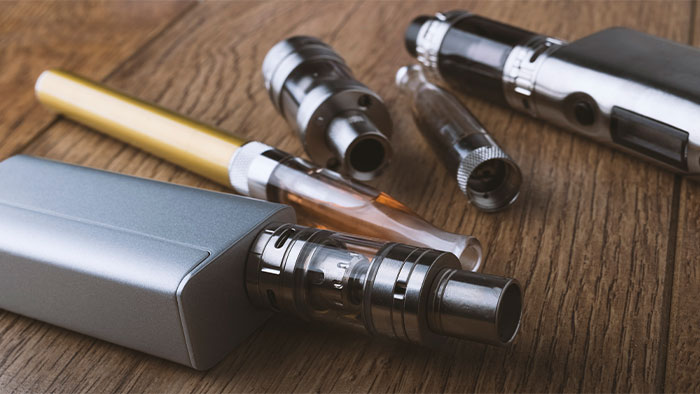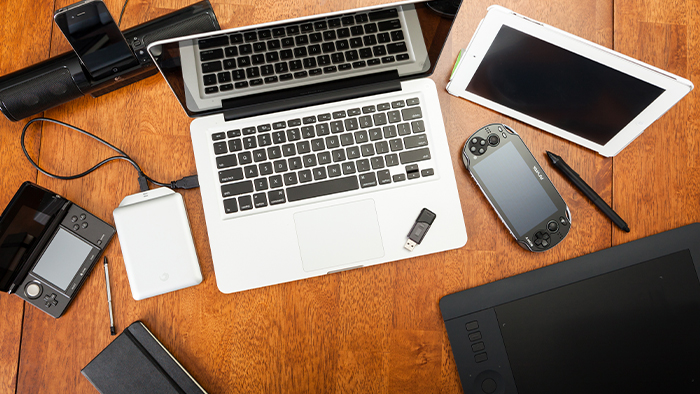Items That No Longer Spark Joy, May Spark Fires
Guest Blog from Blake Weems and Haley Salzwedel
- By [ Tiffin Shewmake ]
- 05/10/2021
Lithium-ion battery products are tricky for retailers to handle, but what about the products we don’t know contain lithium-ion batteries?
Increasingly, consumer products rely upon lithium-ion batteries to provide customers the functionality and convenience they want. In fact, more lithium-ion batteries and products containing them are being sold now than at any time. However, part of this trend is an increase in broken, outdated, or otherwise unwanted products that contain lithium-ion batteries, a waste stream that has significant safety and compliance issues. For example, every year thousands of fires are started from defective or improperly disposed batteries.
Retailers are challenged to safely handle and dispose of product returns and damaged and unsalable products which contain lithium-ion batteries. Battery-containing electronics are complicated to handle at the End of Life (EOL). Adding to this challenge, some items contain “hidden” lithium-ion batteries that are small, hard to locate, impossible to remove, or otherwise unknown to retail associates. Just like any other regulated product, these products must be handled in a safe, compliant, and sustainable way.
Generally, at a high-level, lithium-ion batteries and the products containing these batteries should be handled as Universal Waste. Although the rules around this class are less stringent than other regulated waste streams, it is still important to recognize that these items should NOT be treated like regular garbage. Here is a run-down of a few product categories where lithium-ion batteries may be hidden or unexpected that retailers should be aware of so they can be handled appropriately. This is not a comprehensive list, especially as batteries are included in an increasing range of products.
Electronic Cigarettes and Vape Pens

Electronic smoking devices have grown in popularity over the past few years. Because they contain lithium-ion batteries, as well other potentially harmful components, these smoking alternatives can cause serious threat to life and property if not handled properly. Handling these devices at the EOL has varying levels of complexity depending on whether the unit can be easily broken down into separate components. E-cigarettes and vape pens consist of three main components: a mouthpiece, a battery-powered heating element, and a cartridge or reservoir that holds liquid nicotine, flavoring, and a host of other chemicals.
Although the Environmental Protection Agency’s 2019 amendment to the P075 hazardous waste listing for nicotine provided exceptions for specific over-the counter nicotine cessation products (e.g., nicotine patches, gums, and lozenges) to allow disposal as non-hazardous waste, the nicotine reservoir contained in e-cigs does not qualify as an OTC nicotine replacement product and remains classified as a P075 acute hazardous waste. When disposing of E-cigs and vape pens with attached or integrated nicotine reservoirs, retailers should follow safety handling and disposal procedures for this waste category.
If the nicotine cartridge can be removed and segregated, the cartridge still must be handled as P075 acute hazardous waste but it may be possible to send the rest of the unit (with the lithium-ion battery installed) out through a certified electronics recycler. This option may lower retailers’ waste handling costs. Since dropping, crushing, and puncturing are primary causes of lithium-ion battery incidents, retailers should ensure product handling policies mitigate these risks.
Wearable Technologies
The latest craze for the tech-savvy millennial on the go is wearable technology. From wireless earbuds to fitness trackers, connected watches, and so much more, things that people wear on their body are a billion-dollar business. These products also usually contain miniature lithium-ion batteries that may be integrated into the product or easily overlooked. These days, the rule of thumb should be that anything that holds a charge most likely contains a lithium-ion battery.
In most wearable tech products, the battery is fully integrated. This may mean that the entire device can be handled through a certified electronics recycling program. However, small wearables can escape easily from loose-packed pallets or other less-structured containers, which can lead to an increased risk of crushing or damage. Retailers’ operational procedures should cover the best way to deal with these types of items. Electronics recyclers or special waste haulers can provide guidance on how to handle these types of products.
Everything Else

Today, lithium-ion batteries are made and marketed as rechargeable upgrades for old style batteries, which have more limited life. Common items like Bluetooth remotes, gaming controllers, or other standard-looking, battery powered devices may contain newer lithium-ion stowaways put there by the consumer for more life or power. Retailers that handle or sell used merchandise should be aware of this possibility.
Additionally, many children’s products have these batteries built in: T-shirts with lights and sounds, shoes that blink, and heated snow gloves, just to name a few.
“Singing cards” are another example of a product that is often overlooked. These popular cards usually contain a miniature battery, an electronic circuit board, some wires, and a few small speakers. While they may seem relatively harmless, they cannot be tossed in the trash can or recycled with other paper products. Instead, these cards can be handled in a few different ways. If the store has separate bins for batteries and e-waste, and the electronic components can be separated, they can be segregated accordingly. If the components cannot be separated, the entire item can be treated as Universal Waste or placed in a designated e-waste bin.
One of the biggest challenges retailers will face in the foreseeable future will be handling the avalanche of lithium-ion powered devices proliferating the market. Better choices begin with being more informed. Armed with this knowledge, retailers can prepare associates and make safer and more compliant decisions about the plethora of electronics that are hiding these sneaky little batteries.
Smarter Sorting is on a mission to create a smarter and more connected world for retailers, manufacturers, and consumers by revealing the underlying chemical and physical truths, and possibilities, of consumer products.


